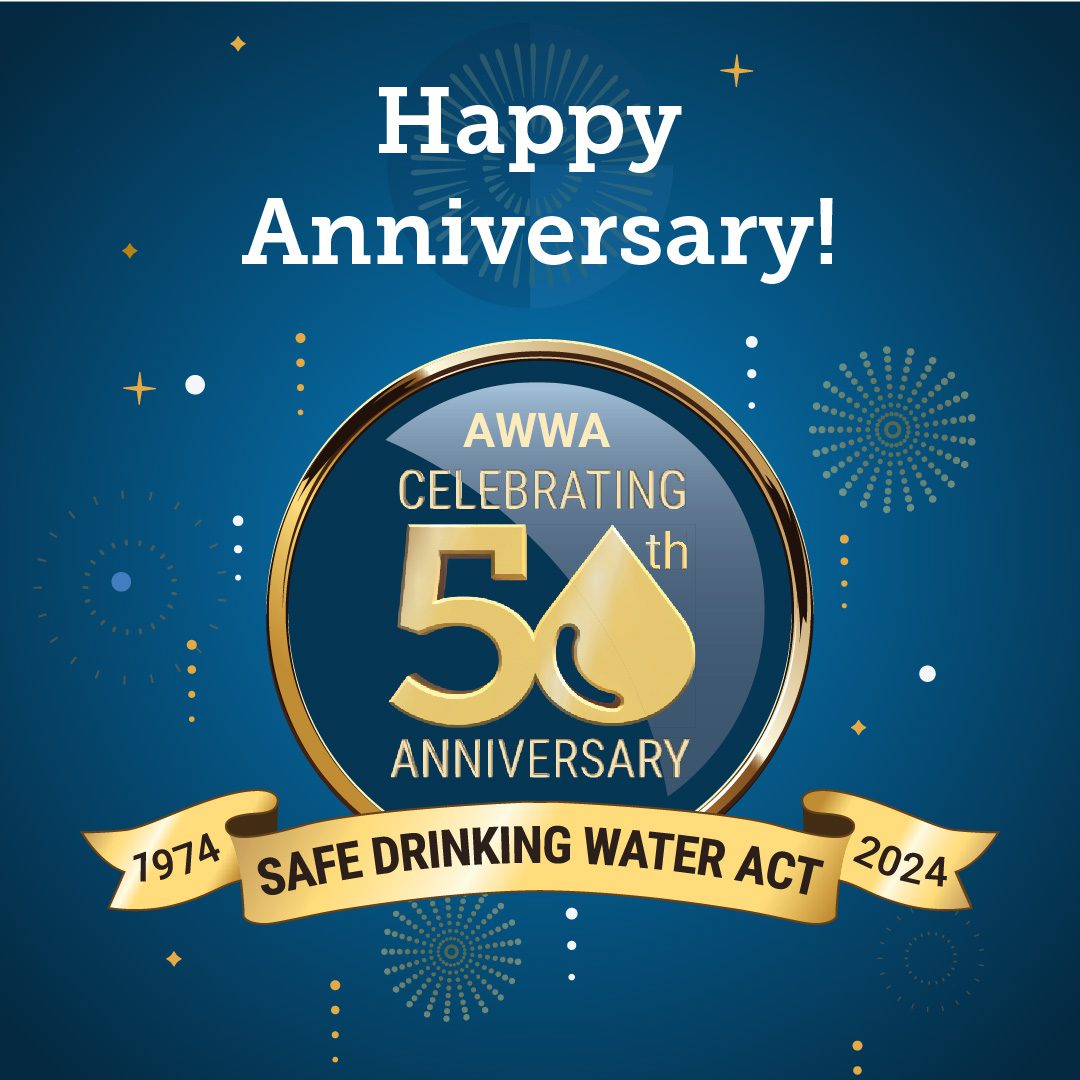The U.S. Safe Drinking Water Act at 50: Another identity crisis
December 11, 2024


AWWA Articles
The U.S. Safe Drinking Water Act at 50: Another identity crisis
On Dec. 16, the U.S. water community celebrates the 50th anniversary of the Safe Drinking Water Act (SDWA). As the American Water Works Association (AWWA) and its members gear up to celebrate this milestone, Tracy Mehan, executive director of the Government Affairs office in Washington, D.C., shares his thoughts on the history and future of this landmark legislation.
Before the 1974 enactment of the SDWA, efforts had been made to protect drinking water and public health. For example, it is recognized that using chlorine for disinfection at the beginning of the 20th century was one of the greatest technological breakthroughs for public health.
As burning rivers and oil spills in the United States galvanized passage of the Clean Water Act, so, too, did a “perceived crisis” contribute to the congressional push to pass the SDWA. A 1974 Consumer Reports exposé, “Is the Water Safe to Drink?” created a national sensation when it claimed that industrial pollution in the Mississippi River contaminated New Orleans’ drinking water. Months later, Congress passed and President Gerald Ford signed the SDWA. Drinking water regulation for the first time was enforceable, federalized and standardized for water utilities of all sizes and locales.
The 1986 amendments
The original SDWA gave the U.S. Environmental Protection Agency (EPA) discretion and authority to regulate drinking water contaminants. Between 1974, when the modern SDWA became law, and 1986, EPA regulated only one additional contaminant beyond the original 22 standards previously developed by the federal Public Health Service.
Congress was under public pressure to regulate contaminants, and it did so with the 1986 amendments. As summarized by the Congressional Research Service, through the 1986 amendments, EPA was required to issue regulations for 83 specific contaminants by June 1989 and to regulate 25 more every three years thereafter.
Because of time constraints and limited resources, EPA issued regulations for 76 of the 83 mandated contaminants by 1992. This ambitious program of regulation was difficult for EPA, states and the regulated community. Both EPA and the Association of State Drinking Water Administrators testified in support of amending—i.e., eliminating—the 1986 amendments.
The 1996 amendments
To address the issues with the 1986 amendments, Congress amended the SDWA in 1996. The latest amendments emphasized “comprehensive public health protection through risk-based standard setting, increased funding (state revolving funds), reliance on best available science, prevention tools and programs, strengthened enforcement authority for EPA, and public participation in drinking water issues.” The amendments also introduced Consumer Confidence Reports, which every community water system must provide to customers annually to inform them of levels of any regulated contaminant in their water and its health effects.
Under SDWA, public water systems collected nationwide occurrence data on approximately 150 contaminants. Establishing what should not be regulated is as important a function of the process as deciding what should be regulated.
Building on past achievements
In 1900, U.S. residents had a 1-in-20 chance of dying from a gastrointestinal infection before the age of 70, but by 1940 the chance was one in 3,333. By 1990, it was down to one in 2 million, a monumental achievement in less than a century.
Since then, it has only gotten better, and America’s water is the safest in the world, due in part to the SDWA. In remarks celebrating the 40th anniversary of the SDWA, EPA Administrator Gina McCarthy noted that before the law passed, 40% of U.S. drinking water systems could not meet minimum health standards but by 2014, more than 90% of American citizens drank water that consistently meets all standards.
Nevertheless, debate around the SDWA continues and includes several outstanding questions:
- Are existing standards adequate to protect public health?
- Are compliance rates high enough?
- What new standards for individual contaminants, groups of contaminants, or entire classes are necessary?
- What level of risk is tolerable and at what cost?
- How safe is safe?
These are not simple issues.
The future of safe drinking water
A critical assessment of safe drinking water in America, not just the SDWA itself, reveals opportunities to improve net social benefits over time that have little to do with the regulatory aspects of the SDWA. To put it differently, the SDWA may be necessary but insufficient in achieving the goal of safe, affordable water in the United States. Factors include:
- Fragmentation of water systems
- Governance questions
- Innovation and affordability
- Strategic partnerships for safer water
Limiting uncertainty with reliable analyses
Precision is elusive in the regulatory process, so the water sector needs to garner the best science, data and risk evaluations, along with reliable economic analyses, to limit uncertainty. This is difficult, but a data-driven approach is preferable to letting momentary passions drive regulatory decision-making. Any further revisions to the SDWA would do well to adhere to the spirit of 1996 rather than 1986 as a matter of prudence.
AWWA invites members to join us in celebrating the 50th Anniversary of SDWA by accessing a suite of online materials to mark the occasion. For more resources and information about the Safe Drinking Water Act, visit AWWA’s dedicated page at awwa.org/sdwa.
Advertisement